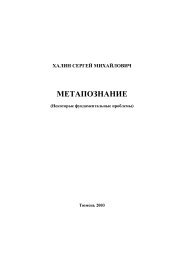The Economic History of Byzantium - Dumbarton Oaks
The Economic History of Byzantium - Dumbarton Oaks
The Economic History of Byzantium - Dumbarton Oaks
You also want an ePaper? Increase the reach of your titles
YUMPU automatically turns print PDFs into web optimized ePapers that Google loves.
994 NICOLAS OIKONOMIDES<br />
household; this was the phylax, whose name came from the building in the great palace<br />
in which it was housed and which had originally been the emperor’s personal treasury,<br />
accompanying him (in the late 10th century) on campaign. Little by little, however, it<br />
developed into a proper sekreton, that is, a department <strong>of</strong> the civil service.<br />
Side by side with the financial services properly speaking, we must note the existence<br />
<strong>of</strong> a number <strong>of</strong> departments that managed the assets <strong>of</strong> the state, including the logothetes<br />
ton agelon (“<strong>of</strong> the herds”), who was in charge <strong>of</strong> the two huge horse-breeding<br />
estates in the provinces <strong>of</strong> Asia and Phrygia, from which came high-quality horses and<br />
mules for the army. Most <strong>of</strong> these departments,however, were involved in the management<br />
<strong>of</strong> the imperial property. <strong>The</strong> (great) kourator, to whom there are references from<br />
the sixth century to 1012, was largely responsible for managing these assets, including<br />
estates, episkepseis, guesthouses (such as those <strong>of</strong> Sangarios, Pylae, and Nikomedeia),<br />
and the palaces outside Constantinople, which depended on these lands for their<br />
maintenance. A new and similar department, called the kouratorikion <strong>of</strong> Mangana (in<br />
Constantinople), was founded early in the ninth century and reorganized by Basil I<br />
(867–886). Last among the major services <strong>of</strong> this kind was the orphanage <strong>of</strong> St. Paul,<br />
aprivate institution founded in the sixth century, which came into state ownership and<br />
was reorganized in 1032 and then again under Alexios I Komnenos.<br />
<strong>The</strong> conquests <strong>of</strong> the tenth century significantly increased the number <strong>of</strong> kouratoreia<br />
and episkepseis on the periphery <strong>of</strong> the empire. <strong>The</strong> great kouratorikion was abolished<br />
and replaced by an inspector, the ephoros <strong>of</strong> the imperial kouratoreia. Some <strong>of</strong> the departments<br />
in Constantinople were amalgamated into the Mangana department, and a new<br />
kouratorikion, <strong>of</strong> Eleutheriou and Mangana, was set up (possibly under Constantine<br />
Monomachos, 1042–55). It is known to have survived until 1088. In other words, we<br />
have widespread decentralization <strong>of</strong> the financial departments, over which the state<br />
exercised merely a certain control.<br />
<strong>The</strong> tenth, and especially the eleventh, centuries saw the development <strong>of</strong> the “charitable<br />
houses” (euageis oikoi; see p. 1007), institutions that were originally privately<br />
funded. <strong>The</strong>se acquired considerable revenue and were used to finance the upper<br />
reaches <strong>of</strong>the aristocracy on behalf <strong>of</strong> the state, which is why they were also called<br />
“charitable <strong>of</strong>fices” (sekreta). Here there was decentralization right from the start, and<br />
there was also an attempt to exercise some state control, in the person <strong>of</strong> the oikonomos<br />
<strong>of</strong> the charitable houses, to whom there are references from early in the eleventh century<br />
to 1088.<br />
In the eleventh century, we gain the impression that the state was particularly interested<br />
in managerial control <strong>of</strong> its financial services. A number <strong>of</strong> new employees, “accountants”<br />
(logariastai), made their appearance in 1012 in the departments <strong>of</strong> Constantinople<br />
and the provinces, on the estates <strong>of</strong> the emperor and private citizens alike. It<br />
was not until the last decade <strong>of</strong> the eleventh century, however, that a central auditing<br />
service was set up. Alexios Komnenos founded two large accounting departments: the<br />
megas logariastes ton sekreton (“grand accountant <strong>of</strong> the sekreta”), who first appears in 1094<br />
and audited all the fiscal services (thus replacing the sakellarios, presumably using more<br />
advanced methods); and the megas logariastes <strong>of</strong> the euage sekreta (“grand accountant <strong>of</strong><br />
the charitable sekreta”), who audited the institutions connected with the imperial prop-








